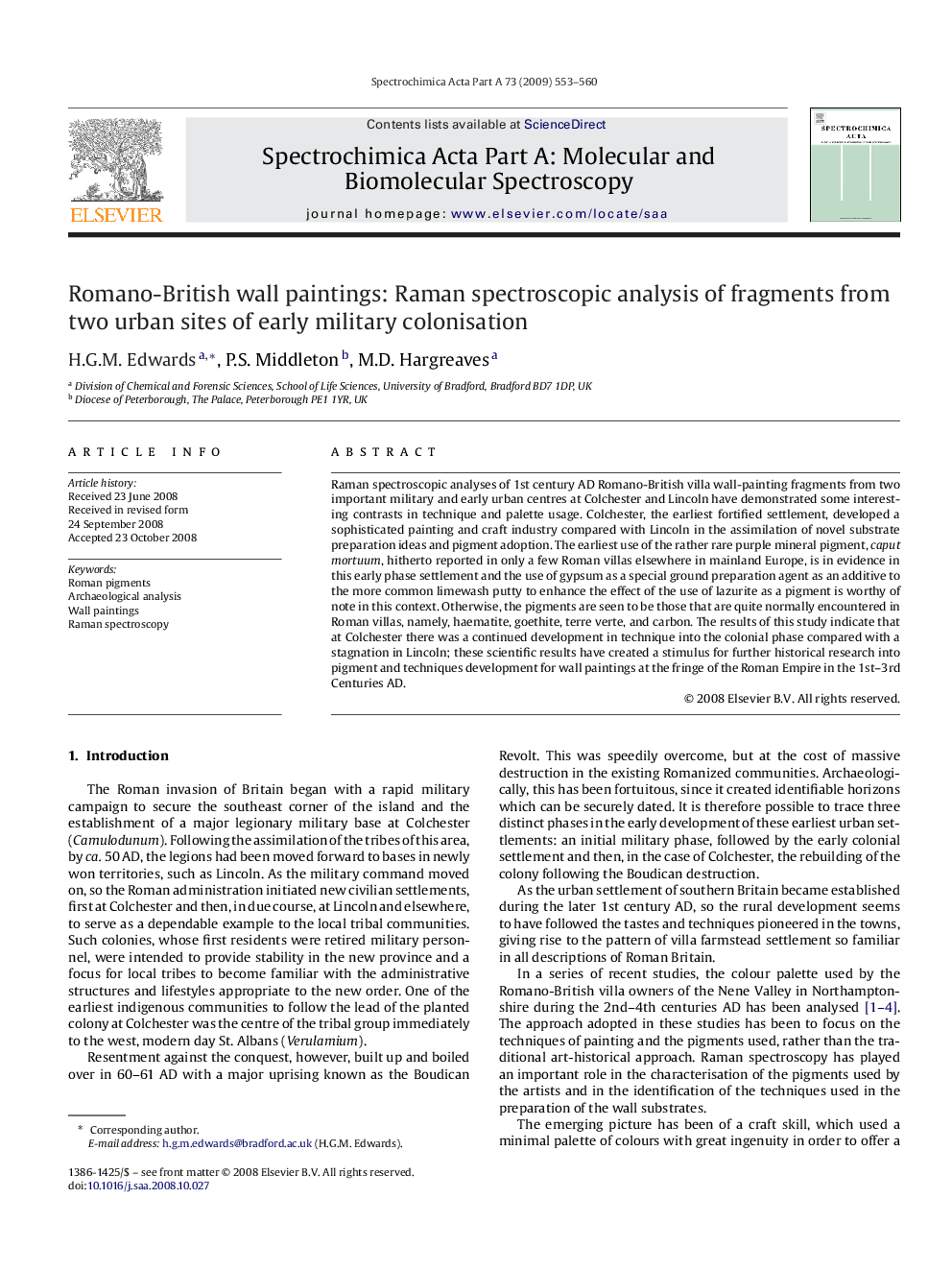| Article ID | Journal | Published Year | Pages | File Type |
|---|---|---|---|---|
| 1233364 | Spectrochimica Acta Part A: Molecular and Biomolecular Spectroscopy | 2009 | 8 Pages |
Raman spectroscopic analyses of 1st century AD Romano-British villa wall-painting fragments from two important military and early urban centres at Colchester and Lincoln have demonstrated some interesting contrasts in technique and palette usage. Colchester, the earliest fortified settlement, developed a sophisticated painting and craft industry compared with Lincoln in the assimilation of novel substrate preparation ideas and pigment adoption. The earliest use of the rather rare purple mineral pigment, caput mortuum, hitherto reported in only a few Roman villas elsewhere in mainland Europe, is in evidence in this early phase settlement and the use of gypsum as a special ground preparation agent as an additive to the more common limewash putty to enhance the effect of the use of lazurite as a pigment is worthy of note in this context. Otherwise, the pigments are seen to be those that are quite normally encountered in Roman villas, namely, haematite, goethite, terre verte, and carbon. The results of this study indicate that at Colchester there was a continued development in technique into the colonial phase compared with a stagnation in Lincoln; these scientific results have created a stimulus for further historical research into pigment and techniques development for wall paintings at the fringe of the Roman Empire in the 1st–3rd Centuries AD.
